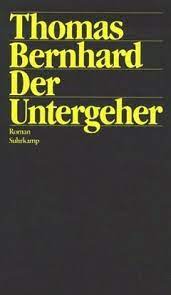While perhaps more important in literary circles than political, Frederic Jameson is a very important Marxist who died today.
While I don’t want to suggest a formal reading club, I wonder if we might just provide some Jameson quotations and our own glosses on them in honor of an important comrade (even if he was, at the end of the day, just an academic and not a revolutionary).
To start, I’ll provide perhaps one of the most famous (and important) bits from The Political Unconscious:
History is therefore the experience of Necessity, and it is this alone which can forestall its thematization or reification as a mere object of representation or as one master code among many others. Necessity is not in that sense a type of content, but rather the inexorable form of events; it is therefore a narrative category in the enlarged sense of some properly narrative political unconscious which has been argued here, a retextualization of History which does not propose the latter as some new representation or “vision,” some new content, but as the formal effects of what Althusser, following Spinoza, calls an “absent cause.”
Here, I think in somewhat dense language, Jameson is really trying to promote history to some term beyond historicity. To put it another way, Jameson’s capital “H” History here is the material world before its interpretation by human agents. I think this is borne out by the next (and more famous line):
Conceived in this sense, History is what hurts, it is what refuses desire and sets inexorable limits to individual as well as collective praxis, which its “ruses” turn into grisly and ironic reversals of their overt intention. But this History can be apprehended only through its effects, and never directly as some reified force. This is indeed the ultimate sense in which History as ground and untranscendable horizon needs no particular theoretical justification: we may sure that its alienating necessities will not forget us, however much we might prefer to ignore them.
Emphasis is mine here. I think that really this gets to Jameson’s conception of what material reality is - it’s in some sense “beyond” any individual (or even collective) agency but nevertheless we act within and upon it. There’s a kind of screen (the screen of Interpretation or representation, which the preceding chapter discusses) that always prohibits our real access to “History” that we are nevertheless part of and embedded in.
Anyway, I’d love to see some other passages from comrades. I’ll post a couple more as well as I procrastinate this week.
RIP to a real one. Abusing my mod powers to sticky this, since he was influential for me.
There’s so much of his stuff I still need to read, but I especially enjoyed his book on Raymond Chandler, The Detections of Totality, and the architecture chapter from Postmodernism. Here’s what he has to say about escalators and elevators in the work of John Portman:
Now I want to say a few words about escalators and elevators: given their very real pleasures in Portman, particularly these last, which the artist has termed ‘gigantic kinetic sculptures’ and which certainly account for much of the spectacle and the excitement of the hotel interior, particularly in the Hyatts, where like great Japanese lanterns or gondolas they ceaselessly rise and fall—given such a deliberate marking and foregrounding in their own right, I believe one has to see such ‘people movers’ (Portman’s own term, adapted from Disney) as something a little more than mere functions and engineering components. We know in any case that recent architectural theory has begun to borrow from narrative analysis in other fields, and to attempt to see our physical trajectories through such buildings as virtual narratives or stories, as dynamic paths and narrative paradigms which we as visitors are asked to fulfil and to complete with our own bodies and movements. In the Bonaventura, however, we find a dialectical heightening of this process: it seems to me that the escalators and elevators here henceforth replace movement but also and above all designate themselves as new reflexive signs and emblems of movement proper (something which will become evident when we come to the whole question of what remains of older forms of movement in this building, most notably walking itself). Here the narrative stroll has been underscored, symbolized, reified and replaced by a transportation machine which becomes the allegorical signifier of that older promenade we are no longer allowed to conduct on our own: and this is a dialectical intensification of the autoreferentiality of all modern culture, which tends to turn upon itself and designate its own cultural production as its content.
Jameson was one of the first theorists I heard about after I radicalized off Mark Fisher and Alan Sokal. Funnily, I never did get around to reading him. Guess it’s time to change that.



